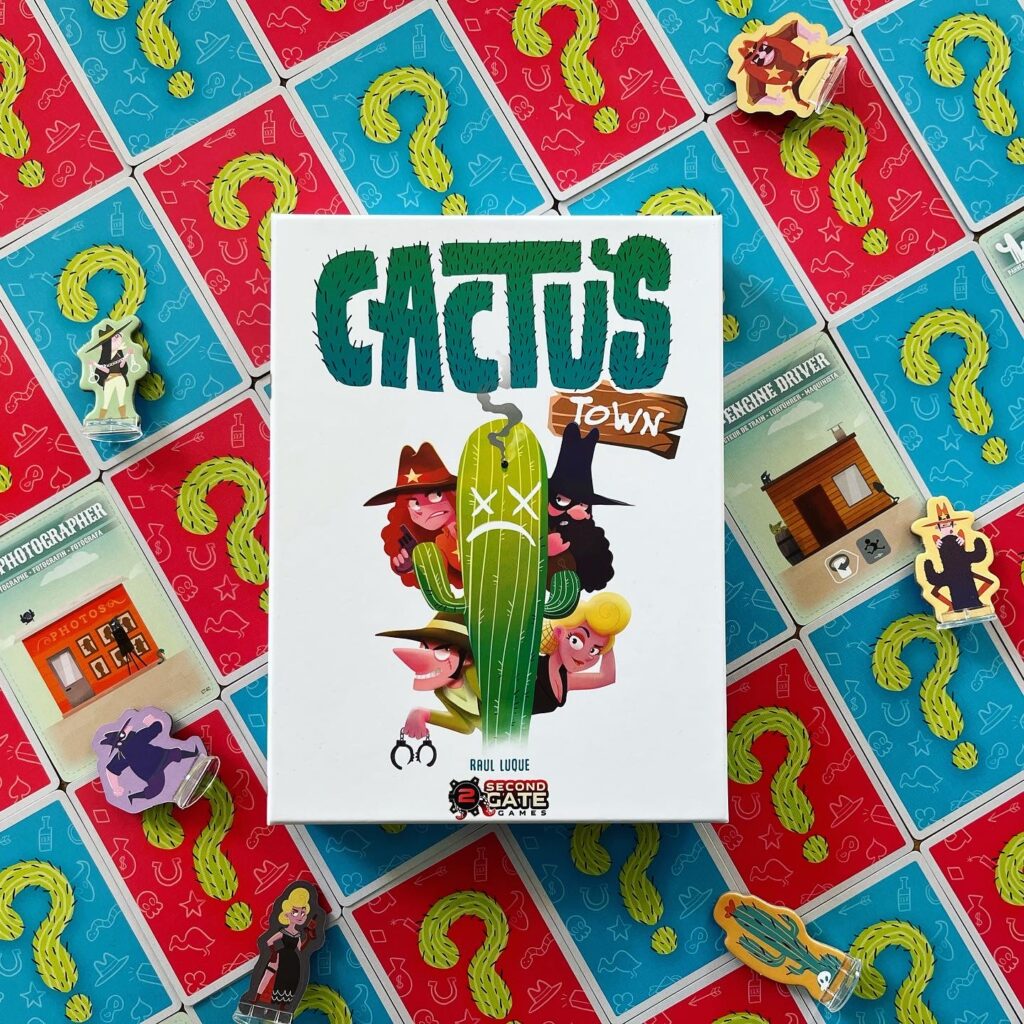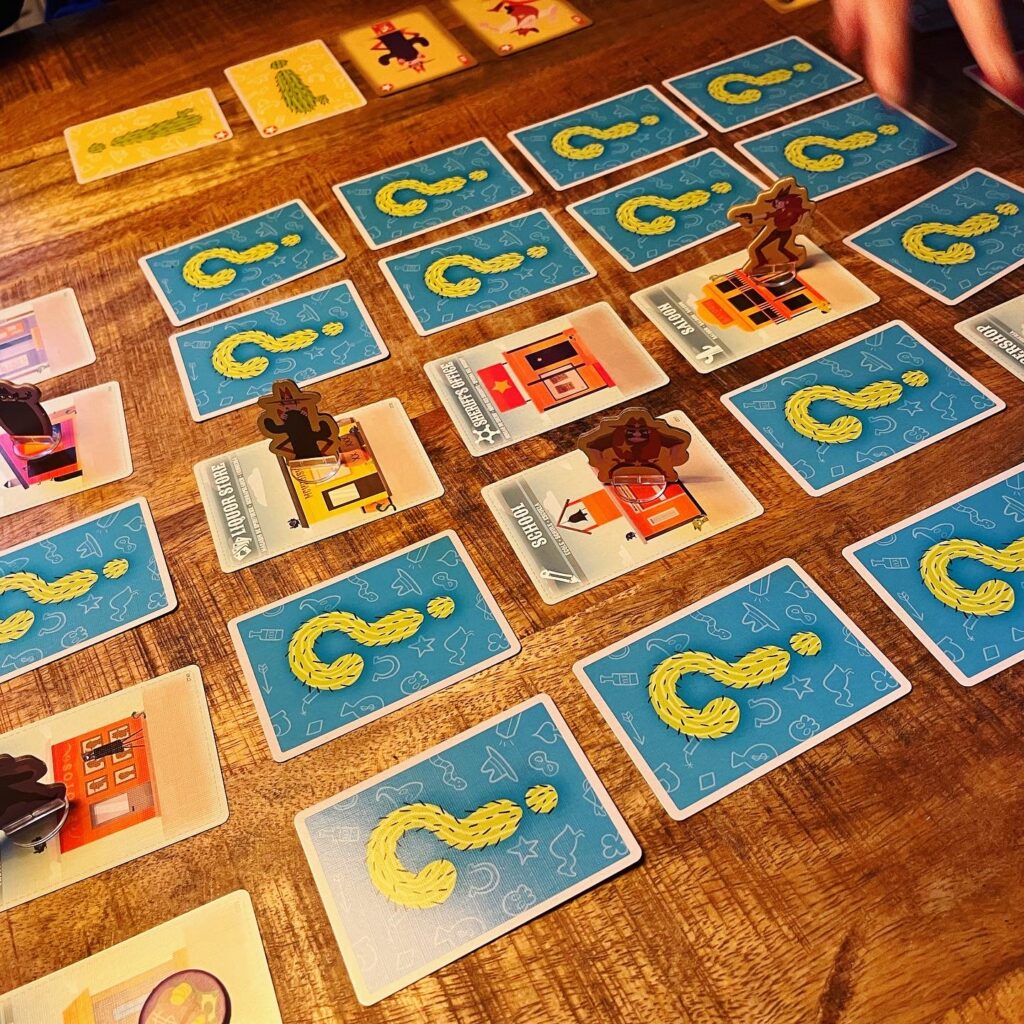The Wild West is wild for many reasons. Gunslingers, cowboys and wanted criminals roam the lands, civil wars are fought out, drought a plenty, bourbon and a lot of bar fights. Cactus Town is a typical Wild West village. The inhabitants of Cactus Town are needle sharp and out for violence. Bandits threaten the town and these glory seekers, in addition to gold, also prey on lascivious cancan dancers in the numerous saloons. The sheriff and his deputies try to maintain order, but have competition from bounty hunters hungry for prey. Will you gold rush to victory or end up in a Mexican stand-off?

Cactus Town is an asymmetric game where each player takes on the role of a faction fighting for Cactus Town. Cactus Town consists of a tableau of five by five cards. In the centre of the tableau is the sheriff’s office and the other cards are placed randomly and closed around it.
All factions have their own components, action cards, actions and victory conditions:
- Sheriff: One of the players takes responsibility as sheriff over his or her three deputies. The Sheriff wins if this player manages to put away two of the bandits;
- Bandit leader: this player tries to lead two of the three bandits out of town with their loot.
- Bounty Hunter: if this player and his or her two bounty hunters manage to tie up a single bandit and steal two horses, this player wins; and
- Cancan dancer: last but not least, this mysterious dancer is out for revenge and wins the game when she has paid off two debts and won three duels.
Because all players have different, but partly overlapping goals, players can hinder each other enormously and this is one of the highlights of the game: the interaction between players is immense, especially with 3 or more players.
On the table city cards are placed face down to form the town and the pawns of players are placed according to their starting positions. Why are these city cards placed face down? To achieve some goals (such as finding the loot, stealing a horse or paying off a debt) players have to enter a specific building and have to discover this building first. Which locations players have to discover depends on their goal cards. The game contains a total of two sets of location cards of which one set is used to create the tableau and the other set is used as the target cards. This immediately creates variation, as one of the two sets has additional rules. As players move, they will discover locations. Other players benefit from this as well, so try not to release too many parts of the city too quickly. This sense of deduction is another fun element of this game.
In a fixed order, players will perform their three actions. Which actions players perform, they must first “program” by choosing three of their cards. Each player has four action cards where the possible actions of players are depicted. Each player has unique actions and the distribution of actions also differs per player. Players choose three cards and will (possibly) perform one of the depicted actions per card. Each action card also contains a number/value. In the case of a firefight between players, a player can use his or her remaining action card during the firefight to increase his or her attack value.

Actions range from running to initiate a firefight to unique actions such as taking loot or capturing a pawn. Firefights are simple to handle. The participating players each roll a die and possibly play their remaining action card. The player with the highest value wins. Players initiate a firefight in which their own pawn takes part in, but players can as a result thereof also forcibly play their opponents against each other. This is a very fun and sometimes indirect interactive game element. These different interactive elements, simple and fast paced gameplay in which players largely commence their moves simultaneously and variation due to the different game variants that Cactus Town offers, ensure Cactus Town is a very entertaining and joy filled game.



